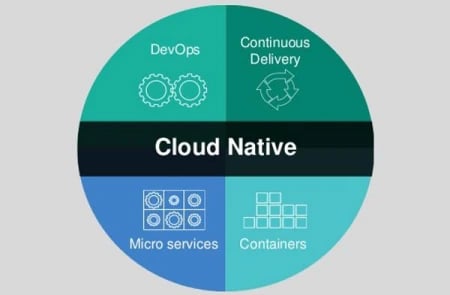What are the most important components for a business to have a successful online presence? Is it speed? Is it a new ground breaking idea? Is it risk management? Whatever the answer may be for your specific situation there is a form of operating that will help. What is this new form of operating? It is cloud native applications and it is revolutionizing the business world.
What Are Cloud Native Applications?
Cloud Native applications are a way of building applications and continuously improving them using the cloud’s infrastructure. These applications allow for companies to receive user feedback and improve their application at a faster rate. The term “cloud native” refers to the fact that these applications are built in the cloud and reside there. They are able to access public, private, and hybrid clouds to ensure consistent development across all cloud networks.

How Do You Build Cloud Native Applications?
DevOps
DevOps is the development and operation function of these applications. It is a process that allows companies to add value to their business by increasing their response time to customer issues. It is a combination of factors that include analytics, security, and innovation. Devops functions by thorough communication between development and operations teams by combining their strengths to perform at a rate faster than either could alone.
Microservices
Microservices are one of the two building blocks to Cloud Native Applications. Traditionally, applications are built in a monolith approach, which means that the whole application is one unit. However, Microservices breaks down the application into individual components. By doing so, the app can be built and restructured in the way the developers please. This infrastructure approach also makes it possible for developers to fix any errors with the application without the knowledge of the users.
Containers
The second building block needed to build a cloud native application are containers. In essence containers do exactly what the name implies. Containers allow applications to be transported through different environments while retaining full functionality. Whether the app is in the development stage, testing stage, or is launching it is able to continue to operate because of containers.
Join the AirFinder Difference!
- Innovation. Organizations can be freed up to innovate and bring more impactful products and services to market.
- Profitability. Increased profitability provides new opportunities to innovate and improve valuation.
- Digital Transformation. Discover competitive advantages, new revenue opportunities, improved customer relationships, and increased efficiency.
What is the Importance of Cloud Native Applications?
Cloud native applications have various benefits compared to traditional applications.
- Scalability: Each microservice is independent of one another allowing the application to scale each microservice to one's desire.
- Resiliency: An application using a cloud native infrastructure is still able to operate through updates and shutdowns in other microservices
- Flexibility: Companies gain a competitive advantage with cloud native apps by being able to use private or public cloud services
Future of Cloud Native Applications
The future of cloud native applications is limitless. IDC notes that by 2023 over 500 million applications will be in use utilizing the cloud native approach. It is understandable to see why cloud native applications have such a great looking future. They offer so many benefits for developers and users alike. At Link Labs, the backbone of our AirFinder solution consists of cloud native applications that allow users to easily track location and condition of business assets in real time. For more information, put in a request today!





